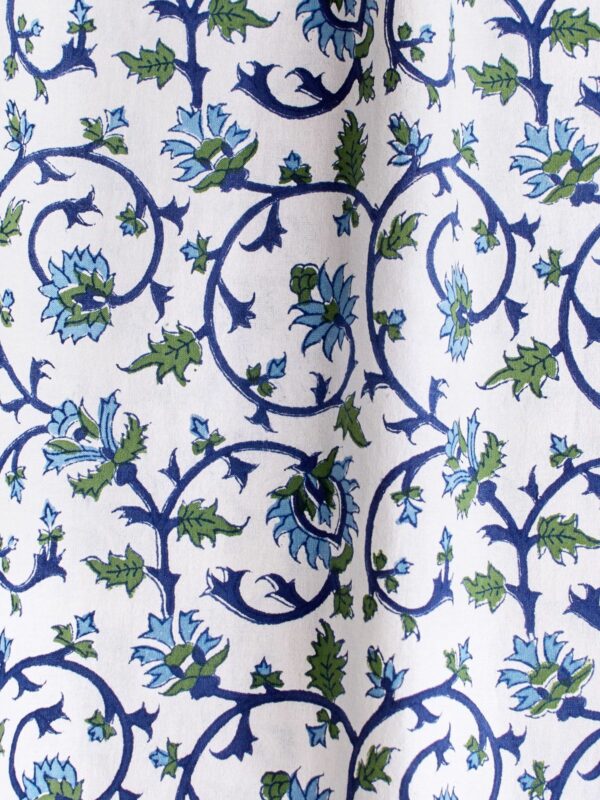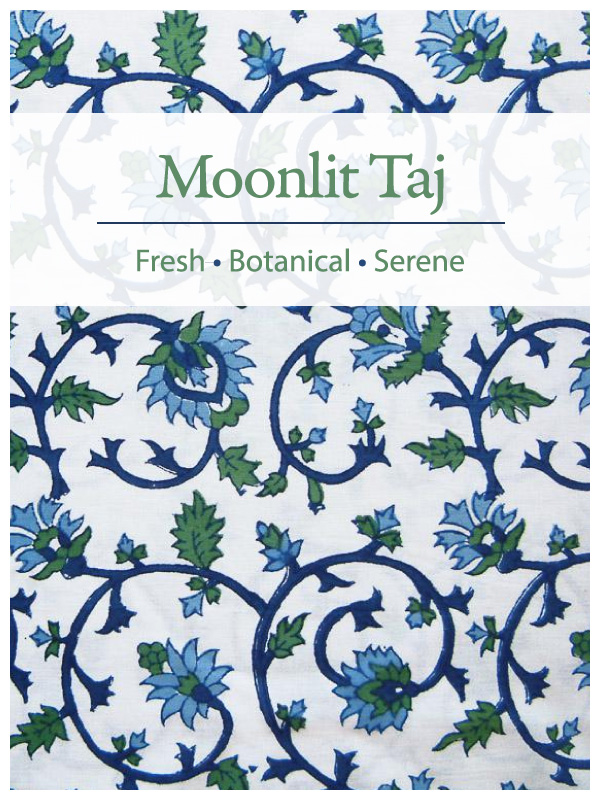The art form known as pietra dura is seen in some of the world’s most iconic monuments and pieces of architecture. Today, we’re going to explore its origins and see gorgeous examples of this fine art. We’ll also discover how this centuries-old craft influenced one of our block print designs.
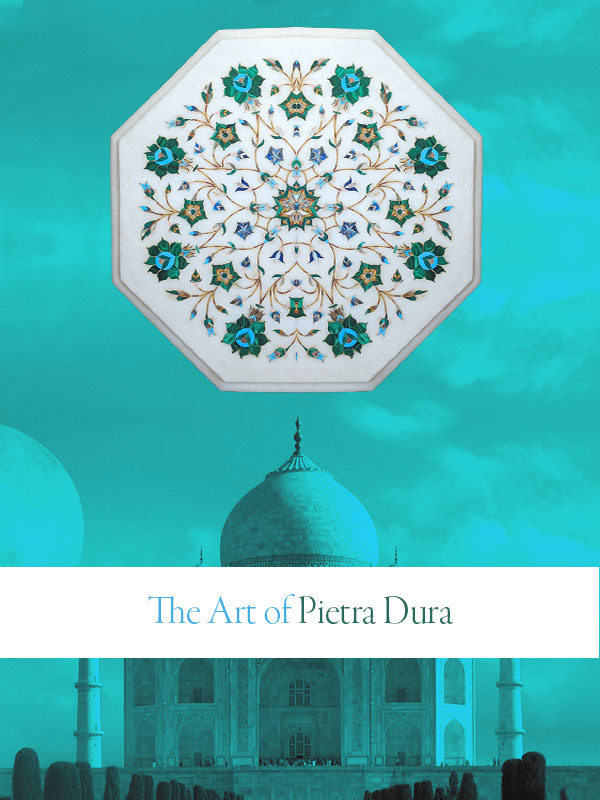
What is pietra dura?
In Italian, the words pietra dura mean “hard stone.” The definition of pietra dura (in terms of art) refers to a particular form of Italian mosaic from the 1500s. The craft involves carving into a hard surface–usually marble. After carving the surface, colorful carved gemstones are laid into the carved marble and set in place with special adhesives.
While most of these marble inlay pieces are decorative and seen in smaller applications, a single mosaic may require thousands of stones, each shaped and positioned with perfect precision. An artisan needs just as much skill to carve the flower shapes into the marble creating the setting for the precious stones. Pietra dura is a difficult craft to master, indeed.
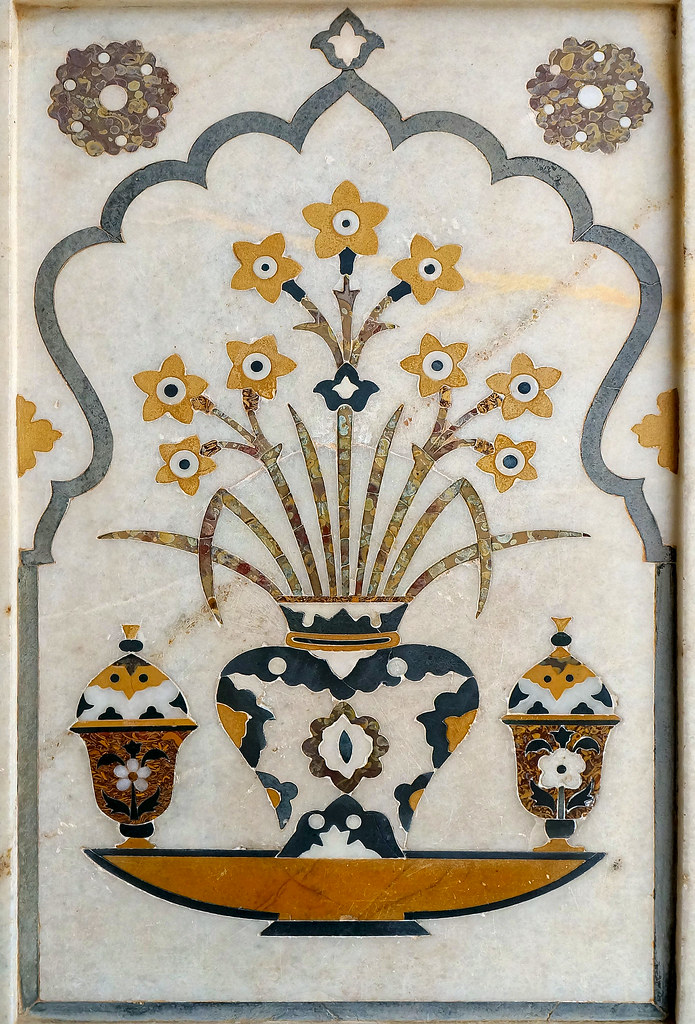
Taj Mahal marble
Italian pietra dura techniques and themes eventually arrived in India where it experienced a new fame under the reign of Emperor Shah Jahan. You may recognize his name: more than 350 years ago, he commissioned the building of the Taj Mahal, a tomb and memorial for Mumatz Mahal. The emperor’s muse and wife, she died giving birth to her fourteenth child.
Building this mausoleum proved to be an immense undertaking. It required more than twenty thousand workers, one thousand elephants, and 22 years to complete.

Many say that the Taj Mahal is a perfect example of Mughal architecture, which blends Persian, Islamic, and Indian designs. However, it’s also a prime example of pietra dura. Here, huge slabs of white marble are filled with precious and semi-precious stones in botanical and floral patterns.
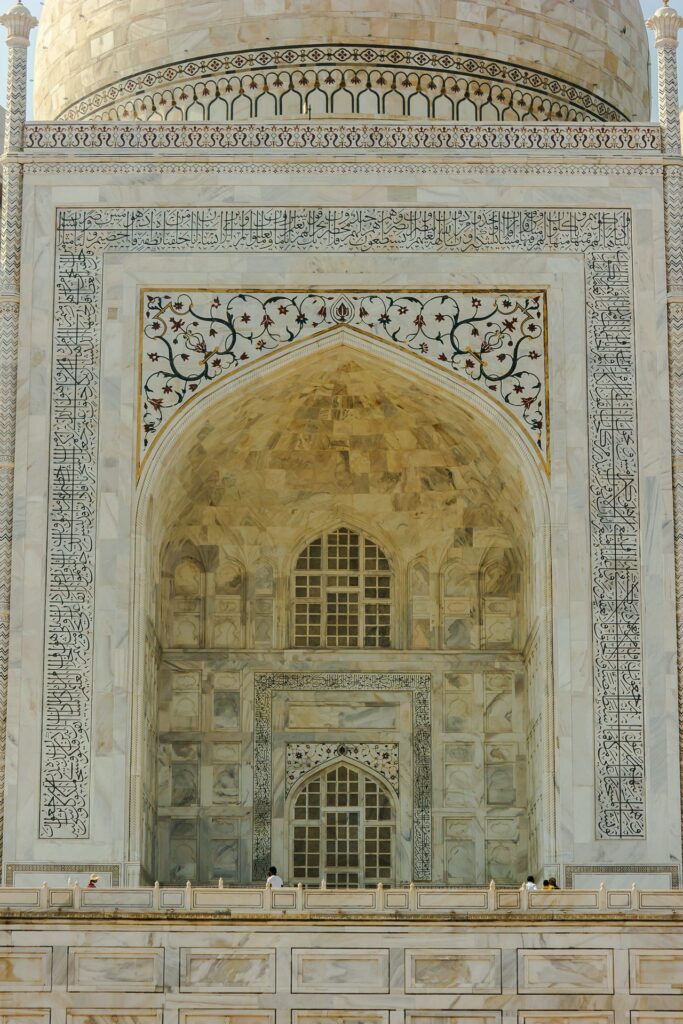
These gem-encrusted flowers adorn the filigree marble lattice work in both the exterior and interior of the Taj Mahal.
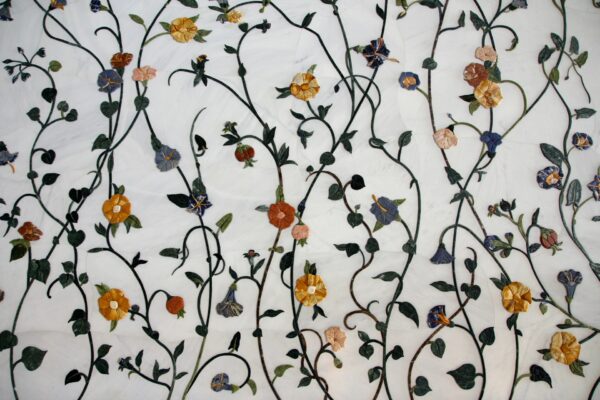
Pietra dura and the Taj Mahal: our inspiration
Saffron Marigold’s designer and co-owner Anisha Ghosh was born and raised in India and has a deep appreciation for India’s handicrafts. After visiting Agra, India (the home of the Taj Majal), she acquired a pietra dura marble tabletop.
“This intricate pattern of sumptuous, scrolling stone flowers rendered in lapis, turquoise, malachite and agate and set on a slab of pristine white marble is the inspiration for the Moonlit Taj collection,” Ghosh says.
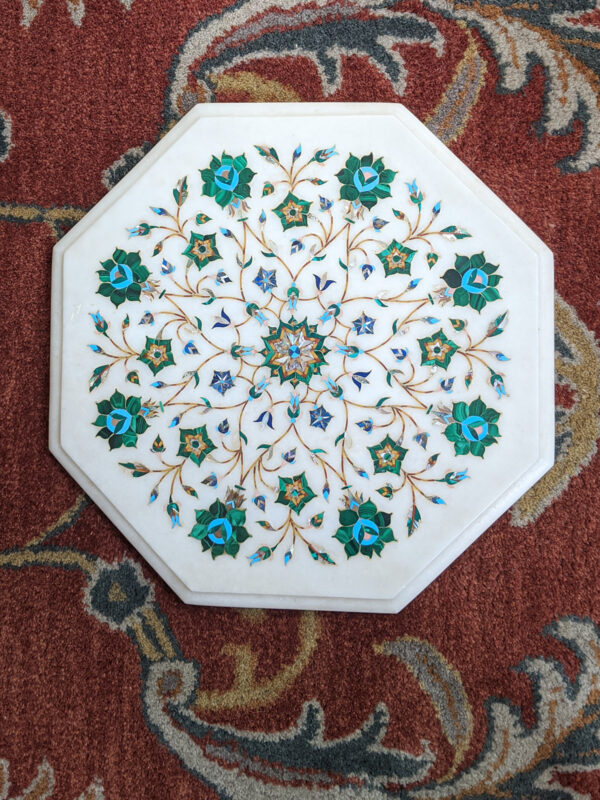
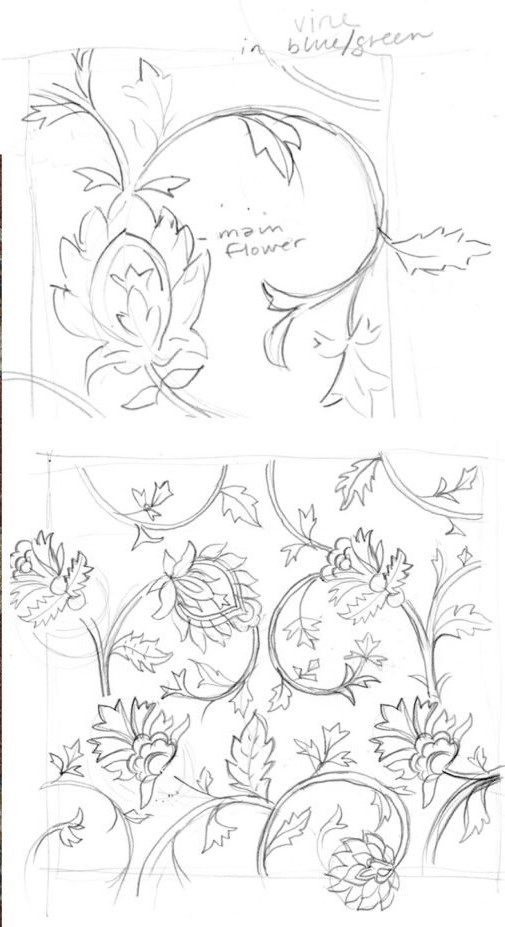
This floral, botanical print depicts luminous moonlight falling on the translucent white marble, encrusted with semi-precious stones.
Moonlit Taj features scrolling lapis, turquoise, and malachite vines set against a ground of milky white marble and is reminiscent of the marble inlay work seen on the walls of the Taj Mahal.
Meet our marble inlay-inspired print
Moonlit Taj captures the romance and timelessness of the Taj Mahal while fitting in seamlessly with modern designs. Fresh, botanical, and soothing, use Moonlit Taj to refresh any space in your home.


